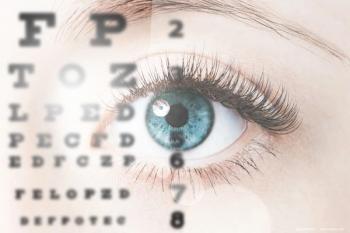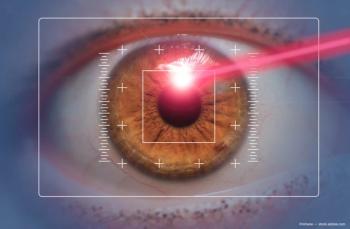
New instrumentation offers advance for IOP measurement
Lisbon, Portugal—Newer tonometry technology seems to offer an improvement over Goldmann tonometry for more accurate IOP measurement in post-LASIK eyes, explained Jay Pepose, MD, PhD, at the XXIII Congress of the European Society of Cataract and Refractive Surgeons.
Dr. Pepose's statement was based on the findings from a prospective study of 66 eyes undergoing myopic LASIK that compared pre- to 1-week postoperative changes in IOP measured using Goldmann applanation tonometry (GAT), the Pascal Dynamic Contour Tonometer (PDCT, SMT Swiss Microtechnology AG), and the Ocular Response Analyzer (ORA, Reichert).
All three instruments were used to measure IOP in all eyes, but the order of measurement was randomized. For the ORA, two datapoints were analyzed: the IOP-G, an IOP value that has been shown to correlate with the GAT value, and the IOP-CC, which is a corneal compensated IOP generated using a newer nomogram.
"In addition, GAT-measured IOP generally drops after radial keratotomy and hyperopic LASIK, and we know those procedures induce little change in central pachymetry but have a profound effect on corneal rigidity," he said. "More accurate measures of IOP will require instruments that perform dynamic rather than static applanation measurements and, therefore, assess and compensate for corneal biomechanics in the metric."
The patients included in the study had an average age of 41 years, mean preoperative manifest refractive spherical equivalent (MRSE) of –5 D, mean K of 44.78 D, and mean pachymetry of 552 μm. The LASIK flaps averaged 134 μm in thickness with a mean diameter of 9.2 mm.
Based on previous research demonstrating that the preoperative IOP was the most important determinant of the amount of underestimated GAT-measured IOP and non-contact tonometric IOP after LASIK, the IOP data were also analyzed to compare the percentage change in tonometry results relative to the preoperative value.
Those results showed the PDCT and ORA-CC had the lowest percentage absolute change as well as smaller standard deviations compared with the GAT and ORA-G values, he said.
"It is important to analyze the absolute changes and not just the net percentage change because IOP can increase or decrease and changes in opposite directions can neutralize each other," Dr. Pepose noted.
Features and operation
The PDCT offers a slit-lamp-mounted operation similar to the GAT. It features disposable tips to prevent contamination and infection, displays the results digitally, and does not require fluorescein.
It has a contoured tip featuring a concave shape that is designed to match the convexity of the cornea. A smaller-diameter, built-in, solid-state pressure sensor measures IOP directly when the tip is integrated flush onto the cornea.
Newsletter
Don’t miss out—get Ophthalmology Times updates on the latest clinical advancements and expert interviews, straight to your inbox.















































.png)


